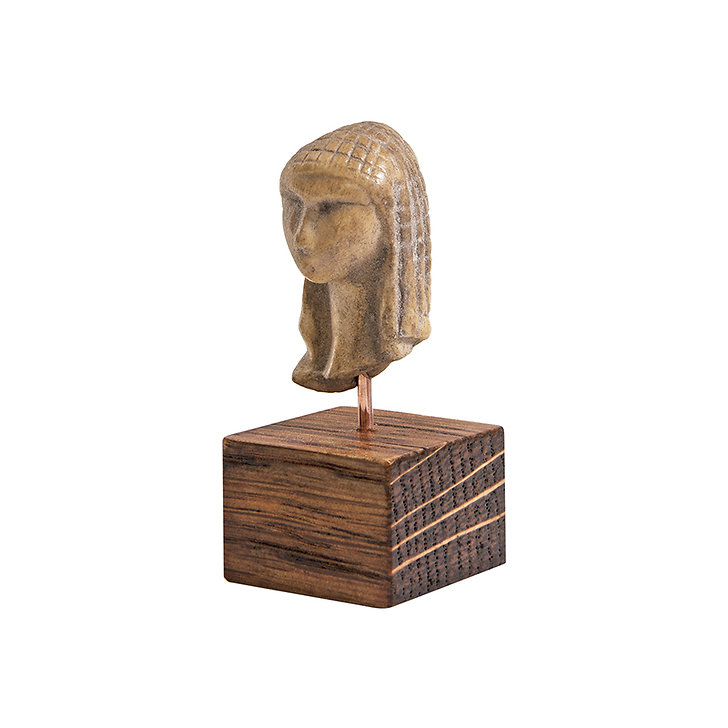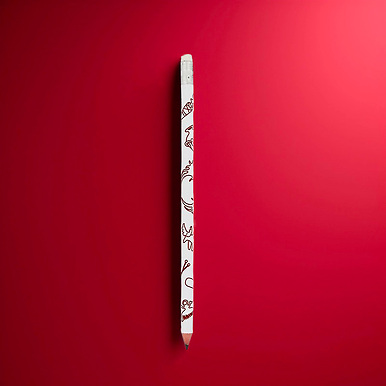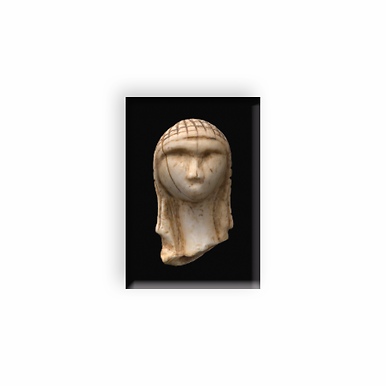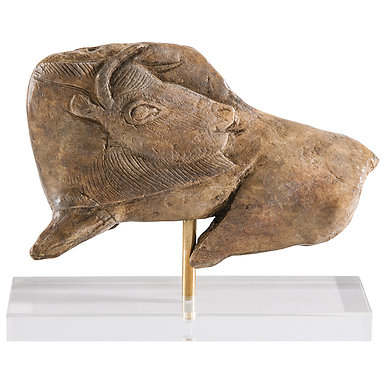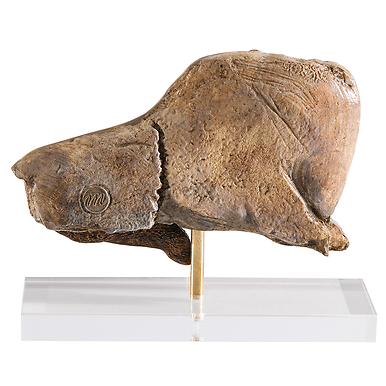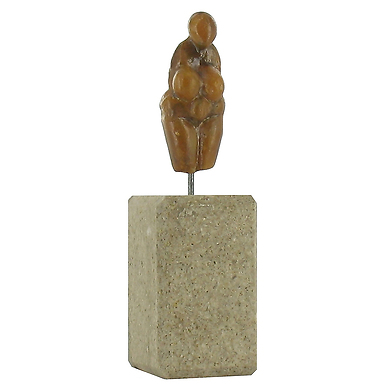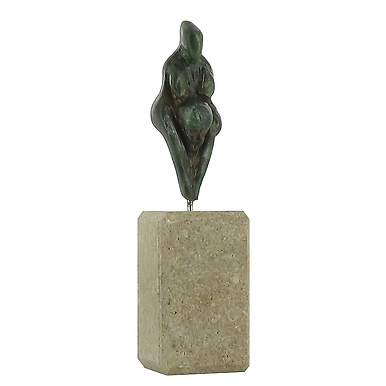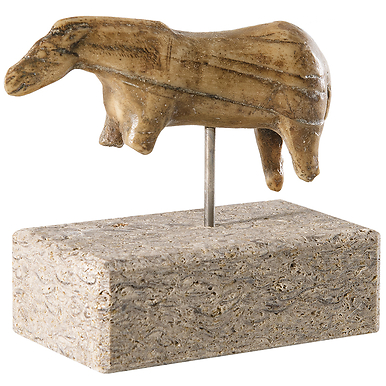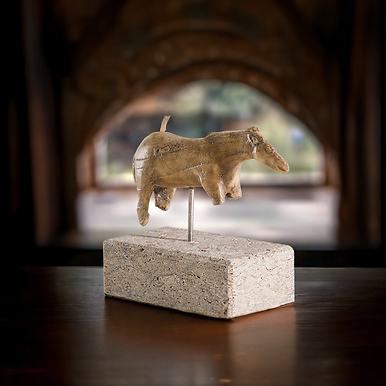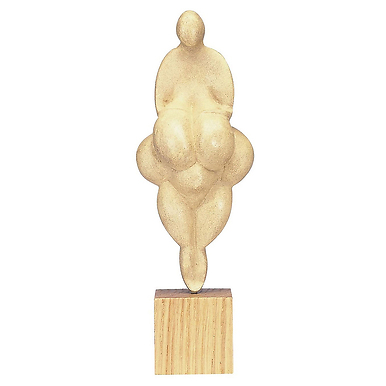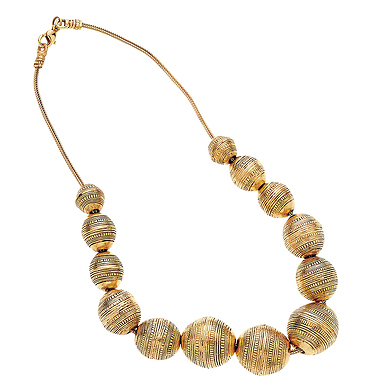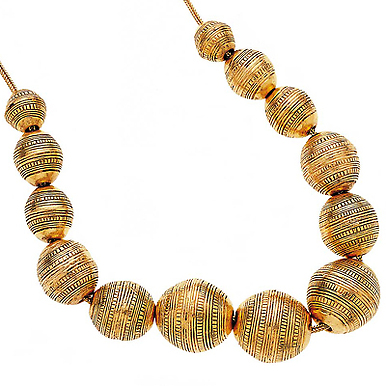Sculpture Lady of Brassempouy
RF004003
Reproduction patinated by hand. Mold made from an imprint of the original work exhibited at the National Archeology Museum.
This statuette was discovered in 1894 by Edouard Piette and Joseph de Laporterie at the Pope's cave, Brassempouy (Landes), probably in a layer attributable to the Perigordian...
Read more
Reproduction patinated by hand. Mold made from an imprint of the original work exhibited at the National Archeology Museum.
This statuette was discovered in 1894 by Edouard Piette and Joseph de Laporterie at the Pope's cave, Brassempouy (Landes), probably in a layer attributable to the Perigordian Superior; it can be dated around 23,000 BC. Prehistoric representations of women are often associated with fertility, emphasizing feminine characteristics (chest, hips, etc.). The Lady of Brassempouy is distinguished from these Venus by its great plastic qualities, including the care given to her hair, suggesting that it is an individualized portrait rather than a symbolic image.
Close
Login to see prices
Sold by GrandPalaisRmn

